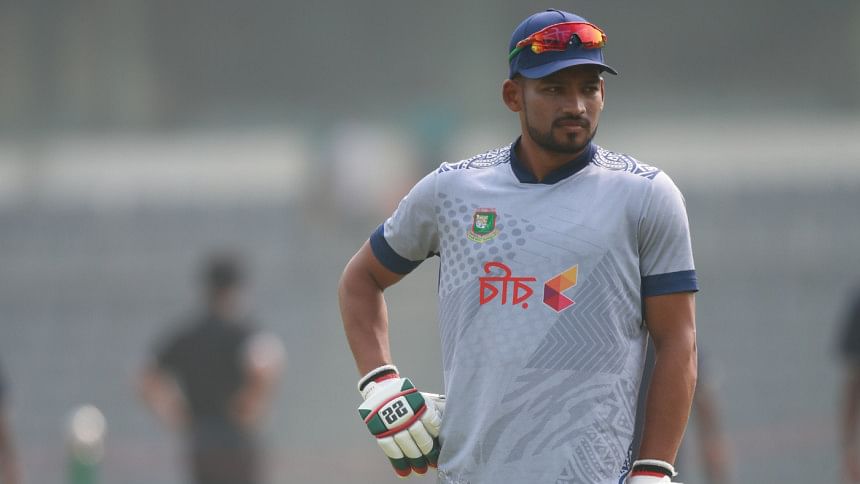Walls closing in on captain Shanto

"Leadership is an amazing disease. It either cures you or kills you," Sourav Ganguly, considered one of the greatest captains ever to lead India in cricket, wrote this back in 2018 in an article for 'The Economic Times'.
As the person who is widely credited for ushering in a new era in Indian cricket with his aggressive captaincy, Ganguly's thoughts on leadership, at least when it comes to cricket, hold considerable weight.
Cricket is unique to most other major team sports when it comes to captaincy. In cricket, the captain has to marshal his troops on the field and make tactical calls on the spot. In return, they get to take most of the credit for victories but also have to bear the majority of the blame for defeats.
The best of players can crack under this pressure, lose sight of their own game and become a shell of the cricketer they once were.
Najmul Hossain Shanto, the current Bangladesh captain in all three formats, is feeling that pressure right now.
His struggles with the bat in T20Is are as clear as daylight. In his last 10 outings in the format, Shanto has scored just 189 runs at a strike rate of a little over 102.
These numbers look even direr considering that seven of those innings were against Zimbabwe (five) and the USA (two).
While Shanto's form has been poor, his team's recent performances have been shambolic. After winning the five-match series against Zimbabwe 4-1, a series that was more closely contested than the margin would suggest, the Tigers suffered a 2-1 series defeat to the USA, a team that is not even considered among the best at the associate level.
Considering his performances with the bat in T20Is, it would be easy to conclude that the pressure of captaincy is getting to the left-hander, which in turn has reduced him to an inferior batter.
But that would not be entirely fair to him.
Statistics show that captaincy has boosted Shanto's pedigree as a batter in ODIs. In his nine innings as ODI captain, Shanto averages 52 at a strike rate of 92.15, which is considerably better than his average (29.44) and scoring rate (78.26) when playing without captaincy.
In Tests, Shanto's average has taken a slight hit since becoming captain, owing to the lean series against Sri Lanka at home earlier in March where he scored 32 runs in four innings.
But he also has a match-winning second innings hundred to his name against New Zealand in Sylhet last year, which helped the Tigers seal their maiden home Test win over the Kiwis.
So, why has his performance been this poor in the lead up to the ICC T20 World Cup 2024, his first major tournament as captain?
For starters, T20Is have always been Shanto's weakest format in international cricket.
In ODIs, his average has been on the rise after a lean start. In Tests, although his average remains a shade below 30, his conversion rate is excellent, having hit five Test hundreds, three of which have come inside the last 12 months, and three fifties.
But in T20Is, his career strike rate of 109.64 is poor even by Bangladesh standard. Among the Bangladesh batters who have made at least 350 runs in T20Is, Shanto's strike rate is second worst behind opener Mohammad Naim (103.42).
Shanto plays the anchor role for Bangladesh, a role that is quickly getting antiquated in T20s, which means he is supposed to bat deep into the innings while the batters at the other end take more risks.
He was growing into the role in the last two years, averaging just over 30 in both 2022 and 2023 at a strike rate of 110.39 and 119.78 respectively.
Shanto was seemingly turning a corner in his T20I career before his progress got torpedoed after getting the captaincy.
Since becoming captain, his scoring rate has dipped to 105.50, and his average (20.90) has also dipped by almost six runs per innings.
With the T20 World Cup knocking at the door, his own form waning and the top-order looking fragile, Shanto right now is under a world of pressure.
He might put on a charade of calm on the outside, as he should as captain, but with runs drying up from his bat and his team at rock bottom, the walls are well and truly closing in on Shanto.

 For all latest news, follow The Daily Star's Google News channel.
For all latest news, follow The Daily Star's Google News channel. 









Comments